#Lagenorhynchus obscurus
Photo

Dusky dolphins (Lagenorhynchus obscurus) playing off the coast of Kaikoura, New Zealand
Michael S. Fuhrer (Feather as a Light)
196 notes
·
View notes
Text

Fitzroy's dusky dolphin "Lagenorhynchus" obscurus fitzroyi
Observed by whale_nerd, CC BY-NC
#Lagenorhynchus obscurus fitzroyi#Fitzroy's dusky dolphin#Cetacea#Delphinidae#cetacean#dolphin#South America#Argentina#Atlantic Ocean
38 notes
·
View notes
Text

Flipper? A Dusky Dolphin (Lagenorhynchus Obscurus) leaps out of the water off New Zealand. Photograph By Flip Nicklin, National Geographic Image Collection
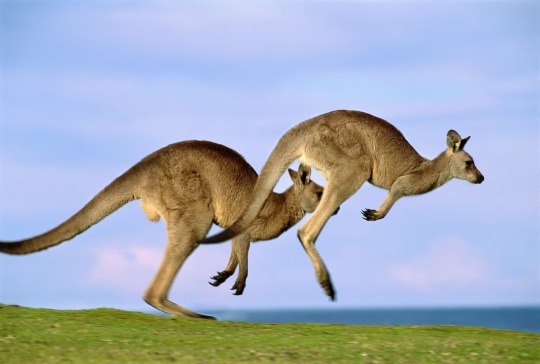
Bounding Buddies! Two Eastern Gray Kangaroos (Macropus Giganteus) jump through Australia’s Murramarang National Park. Photograph By Frans Lanting, National Geographic Image Collection

Nine Weather Up Here! A Manta Ray (Manta) Soars Over the Ocean’s Surface. Photograph By Brian J. Skerry, National Geographic Image Collection

Got Ya! An Arctic Fox (Vulpes Lagopus) Pounces on Potential Dinner Under the Snow in Alaska’s North Slope. Photograph By Design Pics Inc., National Geographic Image Collection

Leaping Through The Fields! A Springbok (Antidorcas Marsupialis) springs into the air while running in Africa. Photograph By Ralph Lee Hopkins, National Geographic Image Collection

Out of Our Way! Blue Wildebeest (Connochaetes Taurinus) bound into the Mara River as they migrate through Kenya’s Masai Mara National Reserve. Photograph By Suzie Eszterhas, National Geographic Image Collection
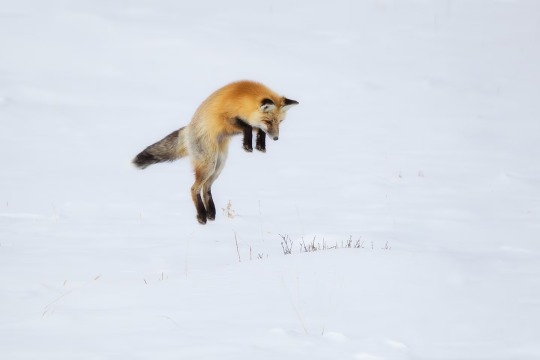
There It Is! A Red Fox (Vulpes Vulpes) pounces on prey burrowed under the snow. Photograph By Robbie George, National Geographic Image Collection
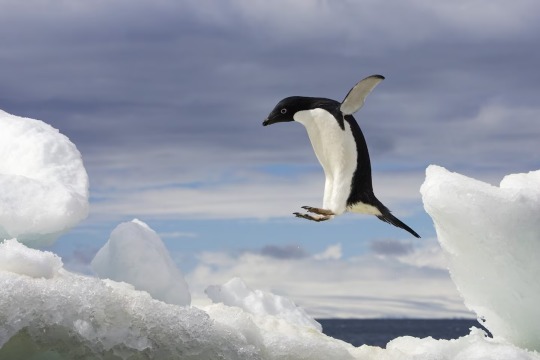
Ice, Ice, Baby! An Adélie Penguin (Pygoscelis Adeliae) jumps on an iceberg in Antarctica. Photograph By Ralph Lee Hopkins, National Geographic image collection

Snowy Goat! A Mountain Goat (Oreamnos Americanus) leaps through snow at Glacier National Park in the Rocky Mountains of Montana. Photograph By Sumio Harada, National Geographic Image Collection
0 notes
Photo

The little lads (+ friend)
Hey everybody. I've been down with the sickness as well as super busy with learning to drive trains, so a bit quiet again. But here’s some more friends from last year’s big commissions: a couple of little lads which I was glad to paint because a) they’re cute b) beautifully marked and c) for some reason I rarely get to paint them.
The Haviside’s dolphin has a funny story because it was actually misnamed. Captain Haviside first brought a specimen to the UK for study. The species was supposed to be named after him, but the zoologist studying the dolphin thought it was surgeon John Heaviside who’d brought it in (he did a lot of collecting too). Alas, scientific names may not be changed willy-nilly and so Captain Haviside remains forever miscredited. Common names, however, are flexible - hence my use of ‘Haviside’s dolphin’, even though ‘Heaviside’s’ is more common.
Commerson’s, our favourite oreo dolphin. There’s two subspecies: the South American which is black-and-white, and the Kerguelen, which is shown here and is more black-grey-white. I think they’re cool cause it shows there’s actually a colour pattern hidden in there. They also have serrated leading edges to their pectoral fins which is weird.
The Southern right whale dolphin is a bit shoe-horned in here (they’re not that little) courtesy of their bff relation with Dusky dolphins. For some reason the two species very often travel together and have even produced hybrid offspring.
#illustrations#scientific illustration#Heaviside's dolphin#Haviside's dolphin#Cephalorhynchus heavisidii#Cephalorhynchus#Commerson's dolphin#Cephalorhynchus commersonii#Comerson's#Dusky dolphin#Lagenorhynchus obscurus#lagenorhynchus#Southern right whale dolphin#Right whale dolphin#Lissodelphis peronii#lissodelphis#dolphin#digital art
75 notes
·
View notes
Video
Dusky Dolphin | Lagenorhynchus obscurus
“Experts have named dusky dolphins as the most active of all dolphins. They are very social, fast-swimming and agile; they are always on the go. Dusky dolphins are enthusiastic, highly skilled acrobatics and regularly perform amazingly high jumps, tumbles and twists, worthy of an Olympic gymnastic competition. They are inquisitive and often approach boats.
These dolphins feed both at the surface and at the bottom of water - a factor, that makes them exceptionally successful hunters. They have been observed hunting in groups of up to 300 individuals, preying on larger schools of fish. They can also change their hunting techniques on occasion. When hunting, they communicate with each other in order to make sure they catch enough prey to provide themselves.” (Source)
#dusky dolphin#Lagenorhynchus obscurus#saltwater#ocean#sea#marine#underwater#undersea#breaching#breach#underwater photography#marine mammal#dolphin#saltwater mammal#marine mammal monday
186 notes
·
View notes
Video
Credit © 🎬 ✅ @oceansoulsfilms Dusky Dolphins playing with SouthernRight Whales, in the presence of homo sapiens. Interspecies interactions go well beyond a simple encounter, you will see on the movie.... Cetacean’s empathy clearly beats ours. Amazing contribution from @wildestanimal to Ocean Souls film 🙏🏻 - Film due early Novembre. Stay put. Dusky Dolphin Dusky dolphins can grow up to 2.1 metres in length and weigh up to 90 kilograms. They have a small, robust body that has a white underbelly and a predominantly dark upperside. On each of its sides it has two pale grey or white blazes, while on its bach is a falcate two-toned fin. 🖋 Zteve Evans Dusky Dolphins (Lagenorhynchus obscurus) live in groups of 15 to 500 through groups of several thousand individuals are known. They live in fission-fusion societies with individuals moving from group to group as and when it suits them. When feeding they tend to split into small groups but when finished will again join up with other groups to rest or socialise. They are very social animals and like the company of their own species while appearing to be comfortable with that of many others. They are known to associate with a variety of other species of dolphin and whales as well as seals, sea birds and also humans. Acrobatic Displays They are very curious dolphins and often approach boats and interact with people in the water. Dusky dolphins are very acrobatic often making high leaps and somersault high out of the water. They can put on a stunning performance that included tail slaps, backslaps, head slaps, leaps, spins and no spouts and a variety of spectacular head over tail leaps. They will often repeat this behaviour dozens of times. Quite often when one starts this behaviour others will follow. Range of the Dusky Dolphin Dusky dolphins are similar in appearance to Pacific white-sided dolphins and although genetically similar they are recognised as a different species. There are three recognised subspecies of dusky dolphins and have been classified by region with all having slight differences in physique and behaviour http://cetaceanswhalesdolphinsporpoises.weebly.com/ https://www.instagram.com/p/CFAaJBfBsGL/?igshid=1szncjkub7boi
1 note
·
View note
Photo

Delfin Oscuro (Lagenorhynchus obscurus), Chubut, Argentina . . . . . . . . #jump #sea #delfin #delfinoscuro #mammal #marino #costa #coastal #whale #ballena #valdes #cliff #ocean #chubut #patagonia #2004 #stayathome #yomequedoencasa #desdecasa #ourplanetdaily #splendidearth #landscapephotography #traveltheworld #argentina #southamerica #sudamerica #nature #naturaleza #wonderfulworld (at Golfo Nuevo) https://www.instagram.com/p/B-4ojCzj-NZ/?igshid=wvchbp25wsgx
#jump#sea#delfin#delfinoscuro#mammal#marino#costa#coastal#whale#ballena#valdes#cliff#ocean#chubut#patagonia#2004#stayathome#yomequedoencasa#desdecasa#ourplanetdaily#splendidearth#landscapephotography#traveltheworld#argentina#southamerica#sudamerica#nature#naturaleza#wonderfulworld
0 notes
Photo
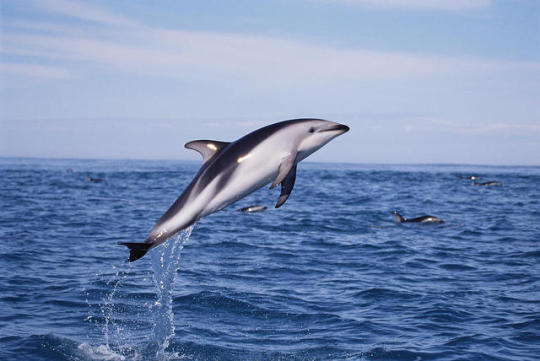
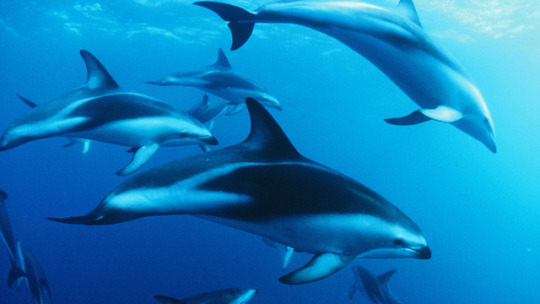
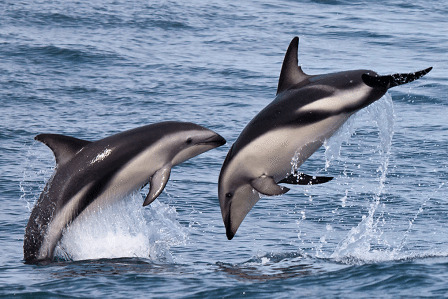



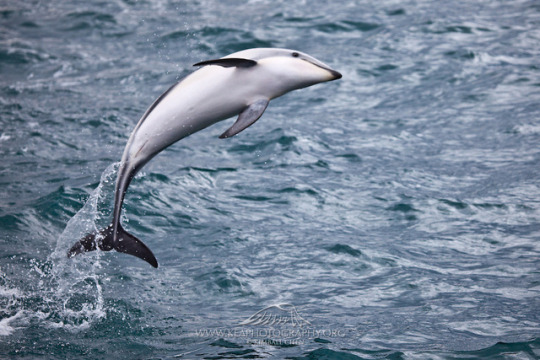



Dusky Dolphin
The dusky dolphin (Lagenorhynchus obscurus) is a dolphin found in coastal waters in the Southern Hemisphere. It is very closely genetically related to the Pacific white-sided dolphin, but current scientific consensus holds they are distinct species. The dusky dolphin prefers cool currents and inshore waters, but can also be found offshore. It feeds on a variety of fish and squid species and has flexible hunting tactics. The dusky dolphin is known for its remarkable acrobatics, having a number of aerial behaviors. The dusky dolphin has a discontinuous semi-circumpolar range. The dolphins can be found off the coasts of South America, southwestern Africa, southern Australia and Tasmania, New Zealand, and some oceanic islands.
The dusky dolphin is small to medium in length compared with other species in the family. There is significant variation in size among the different population areas. The largest dusky dolphins have been encountered off the coast of Peru, where they are up to 6 feet in length and 210 pounds in mass. The back of the dolphin is dark grey or black, and the dorsal fin is distinctively two-toned. The dusky dolphins has a long, light-grey patch on its fore side leading to a short, dark-grey beak. The throat and belly are white, and the beak and lower jaw are dark grey.
Dusky dolphins perform a number of aerial displays, including leaps, backslaps, headslaps, tailslaps, spins, and noseouts. They also perform head-over-tail leaps which have been called the most "acrobatic" of the displays. Young dusky dolphins apparently are not born with the ability to perform the leaps and must learn to master each one. Calves appear to learn the leaps in this order: noisy leaps, head first re-entries, coordinated leaps, and acrobatic leaps.
45 notes
·
View notes
Photo
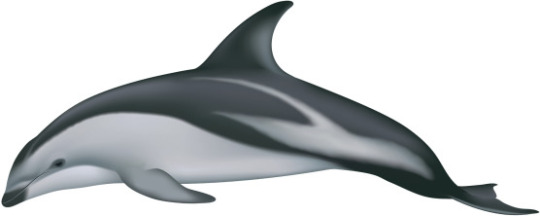



305) Delfinowiec ciemny, delfin ciemny, dusky dolphin (Lagenorhynchus obscurus) – gatunek ssaka z rodziny delfinowatych (Delphinidae). Stosunkowo małej wielkości delfin, żyje w wodach ciepłych i chłodnych umiarkowanych półkuli południowej.
0 notes
Text
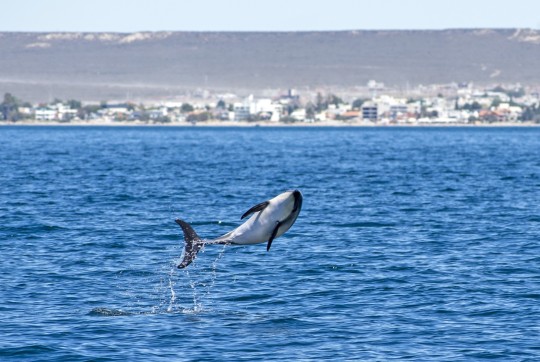
Fitzroy's dusky dolphin "Lagenorhynchus" obscurus fitzroyi
Observed by tinchobrogger, CC BY-NC
#Lagenorhynchus obscurus fitzroyi#Fitzroy's dusky dolphin#Cetacea#Delphinidae#cetacean#dolphin#South America#Argentina#Atlantic Ocean#Golfo Nuevo
9 notes
·
View notes
Photo

_____
Lagenorhynchus obscurus - Dusky dolphin / Delfín oscuro
Nikon D7000 [f/6.3 - 1/800sec - ISO-1000 - 105 mm]
Continental shelf and oceanic waters of Uruguay
#pohtography#wildlife#dolphins#dusky dolphin#cetacean#marine life#marine mammals#ocean#nature#open ocean
18 notes
·
View notes
Text
Un delfín "oscuro" apareció muerto en una playa de Mar del Plata
Un delfín “oscuro” apareció muerto en una playa de Mar del Plata
Juan Lorenzani, miembro de Fauna Argentina de Mar del Plata, explicó a Télam que “el ejemplar fue encontrado sin vida este viernes alrededor de las 8, sobre la orilla de la playa Cardiel, situada en la Avenida Felix U. Camet y Cardiel”, de la ciudad balnearia bonaerense.
“Este animal marino -denominado delfin oscuro (Lagenorhynchus obscurus)- es una especie de cetáceo odontoceto de la…
View On WordPress
0 notes
Photo

• HYBRID DOLPHINS •
- Species: Southern right whale dolphin (Lissodelphis peronii) x Dusky dolphin (Lagenorhynchus obscurus)
- Parentage: unknown, possibly sire x dam
- Status in the wild: very likely | Status in captivity: X
View the entire hybrid dolphin series
It seemed only fair that the first official illustration should be of the hybrid that started it all. This most charismatic of hybrids, the dolphin that shouldn’t have a dorsal fin - and yet does. It’s one of the few wild hybrids to be described in scientific literature but has also been observed by private individuals, most notably whale-watchers off Kaikoura, New Zealand. Since no DNA tests have been done their status is not certain. But the strong known association between the presumed parent species, and the intermediate features make the hybrid ‘very likely’. Hybrids have been seen in mixed species groups as well as the sole company of Dusky dolphins, making this the possible maternal parent species.
I find the right whale dolphin hybrid especially interesting because they combine a very stark black-and-white pattern with more subtle markings. Without photographs it would be hard to guess what colouration would dominate. As it turns out: Lissodelphis does. The Lagenorhynchus side of the arrangement is only found in the faint hint of a blaze on the flank, a dark marking on the beak, the separate eyespot, the faint grey on the shoulder, and of course that two-toned dorsal fin, albeit diminished in size and shape from the original. Note also the pectoral fins which have a most interesting shape. Lissodelphis have very unusual, elongated sickle-shaped pectorals and although somewhat normalised, the shape is still clearly present in the hybrid.
Multiple existing photographs, albeit of varying quality, make this one of the better documented wild hybrids. Very little guesswork was undertaken in the creation of this illustration, mostly with the colouration of the flukes.
• REFERENCES •
- Yadzi, P. (2002). A possible hybrid between the dusky dolphin (Lagenorhynchus obscurus) and the southern right whale dolphin (Lissodelphis peronii). Aquatic Mammals, 28(2), 211-217.
- Benegas, R. J., Orri, R. D., Pettite, L., Castello, H. P. 2000. Sighting and video recording of a possible hybrid dolphin between Lagenorhynchus obscurus and Lissodelphis peronii at Golfo Nuevo, Pla. Valdés, Chubut, Argentina. Abstracts of the 7th International American Cetacean Society Meeting, (Monterey).
- Several photographs taken by private individuals.
#illustrations#scientific illustration#hybrid#hybrid dolphins#southern right whale dolphin#Lissodelphis peronii#dusky dolphin#Lagenorhynchus obscurus#Lissodelphis#lagenorhynchus#digital art#hybrid dolphin
65 notes
·
View notes
Text
Dusky dolphins (Lagenorhynchus obscurus) leaping off the coast of Kaikoura, New Zealand [OC] [5097 x 3398]
http://dlvr.it/NH8kFd #sfwp #hot #reddit
0 notes